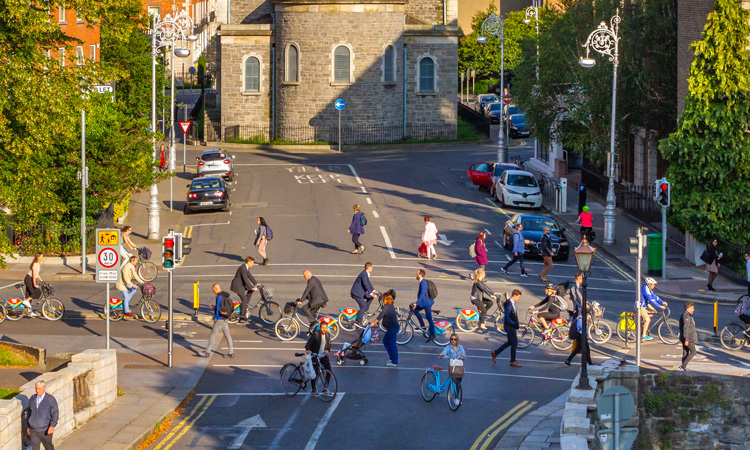ETSC calls for urgent action to protect cyclists and pedestrians in Europe
- Like
- Digg
- Del
- Tumblr
- VKontakte
- Buffer
- Love This
- Odnoklassniki
- Meneame
- Blogger
- Amazon
- Yahoo Mail
- Gmail
- AOL
- Newsvine
- HackerNews
- Evernote
- MySpace
- Mail.ru
- Viadeo
- Line
- Comments
- Yummly
- SMS
- Viber
- Telegram
- Subscribe
- Skype
- Facebook Messenger
- Kakao
- LiveJournal
- Yammer
- Edgar
- Fintel
- Mix
- Instapaper
- Copy Link
Posted: 3 February 2020 | Sam Mehmet (Intelligent Transport)
Deaths among pedestrians and cyclists accounted for 29 per cent of all recorded road deaths across the EU in 2018, according to the European Transport Safety Council.


Deaths of cyclists in the EU have fallen eight times more slowly than deaths of motor vehicle occupants since 2010, according to the European Transport Safety Council (ETSC). The organisation has called for urgent action to ensure that sustainable modes of transport, such as walking and cycling, are made much safer.
The latest figures reportedly show that there were at least 51,300 pedestrians and 19,450 cyclists killed on EU roads between 2010 and 2018. The researchers found that while deaths among motorised vehicle occupants fell by 3.1 per cent a year over the period, deaths among cyclists averaged only a 0.4 per cent annual reduction – eight times slower.
The slow decline in cyclist deaths is said to reflect both an increase in levels of cycling in several EU countries, but also the failure by the EU, governments, local authorities and motor vehicle manufacturers to invest more heavily in measures to protect vulnerable road users, according to the ETSC.
99 per cent of pedestrian deaths and 83 per cent of cyclist deaths were recorded as a consequence of an impact with a motor vehicle. The research also revealed that half of all cyclists and pedestrians that die on EU roads are over the age of 65. ETSC said the challenge is how to improve safety while walking or cycling, particularly for high-risk groups such as the elderly and children.
The report recommended applying a hierarchy for urban planning that prioritises walking, cycling and public transport over private car use, as well as 30 km/h limits supported by traffic calming infrastructure and by enforcement in areas with high levels of walking and cycling.
The authors also called on the EU to channel funds into road safety improvements such as the infrastructure modifications needed to support safer city streets and to come forward with a strategy on safe active mobility.
As well as this, the report outlined that improved data collection is essential because many deaths and serious injuries of cyclists and pedestrians still go unrecorded, as well as Key Performance Indicators to track progress across the EU on improving safety for these groups.
Commenting on the report, Graziella Jost, Projects Director at ETSC, said: “The EU is facing a multitude of challenges: the climate emergency; road deaths and serious injuries; air pollution and obesity. Policies that improve the safety of cycling and walking can also make a major contribution to tackling all these challenges. Some EU countries, the Netherlands and Denmark in particular, are showing the way forward. If they can do it, so can the rest of the EU.“
Related topics
Infrastructure & Urban Planning, Sustainable Urban Transport, Transport Governance & Policy, Vehicle & Passenger Safety
Related cities
Europe
Related organisations
European Transport Safety Council (ETSC)
Related people
Graziella Jost








